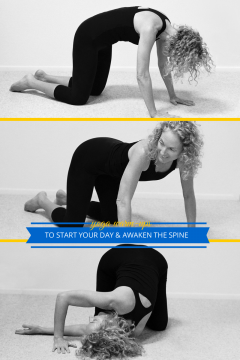
It is best to begin your practice with a qualified yoga teacher who can assess your body’s needs. Many poses can be adapted for body type and ability. Here are three basic, gentle warm-ups that provide a good stretch and flex for the spine. The spine is the house of the central nervous system, so maintaining flexibility in your spine is important for the health and vitality of all the systems of the body. Practice these simple exercises every morning, even if you don’t have time for a complete Yoga practice.
Six Movements of the Spine
Cat/Cow (Spine Extension and Flexion)
Movement:
These two movements for the spine contain the rudiments of both a backward bend and a forward bend. Come into a table position on your hands and knees, placing your palms directly under your shoulders and your knees beneath your hips, or a little wider for good stability. As you inhale, lift your tailbone, then, vertebra by vertebra, lift your spine and look up through the crown of your head. In this position, your belly is like a hammock, stretching out of the house of your pelvis.
As you exhale, round the spine like an angry cat, drawing your navel back toward your spine and your chin to your chest.
Mantra:
As you exhale and round the spine, try the cooling, calming sounds of “oh, Uuu, Ah.”
Slowly go back and forth between the two positions, undulating the spine, inhaling for the full count of four through the nostrils, exhaling for six, or using the suggested mantra tomes. Do this at least five times.
Side to Side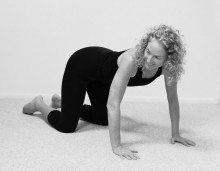
Movement:
These two motions give a good lateral stretch to the spine. From the same table position, bring your right hip up towards your right ear, making a “C” curve with your body, like a human comma. Imagine you could put your right ear in your right hip pocket. Now move to the other side and do the same thing. Move back and forth slowly, from right to left, exhaling through the mouth with a “ha” breath every time you move to the side and inhaling to center.
Mantra:
You can also use the energizing tone of “vam” as you swing your hips from side to side, inhaling back to center. Practice this at least five times.
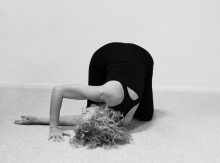 Threading the Needle
Threading the Needle
Movement:
From table position, inhale your right arm up towards the ceiling, then exhale and bring that arm through the window of your left palm and knee and bring the right side of your head to the mat.
Continue to breathe deeply through your nostrils as you press your left fingertips into the mat to roll your left shoulder back for more of an upper body twist. You can practice little micro-movements here, moving the hips, rolling the head for a neck stretch. If you wish, you can lift your left arm into the air and explore various arm movements.
Enjoy the stretch for at least three long breaths 4:4 count breaths through your nostrils. The body loves to twist. Play with it. Make it yours.
Mantra:
Inhale for four counts. As you exhale and twist more deeply into the pose, practice the cooling calming tones for the upper chakras, beginning at the solar plexus and moving up to the brow point. The tones are “Ah, A, E, Mmmm.” Practice these mantras two or three times.
To come out of the pose, lower your left arm down and use it to press you back into table position.
Take a moment to close your eyes and unwind yourself. Trust the wisdom of your body to bring you back into balance. Then come back to a neutral table position and practice the same sequence on the other side. Enjoy. Make every movement count by paying attention to the breath and the sensations in your body as you practice.
When you return to table after threading the needle to the other side, again close your eyes and move in any way that brings you back into balance. Yoga is not about the “doing” but the “undoing” of all those tight places, the blocks in your body that trauma and loss have stored there. Imagine that you are dissolving another karmic knot (samskara) as you release. You probably are.
When you have completed the Six Movements for the Spine, come into Child Pose by bringing your buttocks back to your heels, resting your forehead on the mat and drawing your arms alongside your body. If your buttocks aren’t touching your heels, you may place a cushion between your hips and your heels for more support. It also feels good to bring a cushion underneath your forehead. Rest in Child Pose. Yoga is about balance. Take a moment to balance the “doing” of the Six Movements of the Spine with stillness. Relaaaaaax.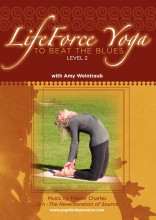
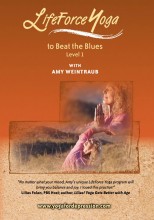
You can practice this sequence with me and other poses with mantra and pranayama breathing for managing your mood on one of the two LifeForce Yoga to Beat the Blues DVDs. If you’re a beginner, start with level one. Click here to watch a sample. If you already practice hatha yoga and enjoy standing poses, you don’t need to start with level one. You can begin your practice immediately with the level two DVD. Click here to watch a sample.
If you would like to read more about yoga and how it transformed the lives of my students and colleagues, and saved my own life, read Yoga for Depression.
Looking forward to meeting in February at Kripalu!!!!